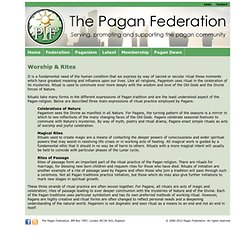

The Inquisition. The Inquisition was a Roman Catholic tribunal for discovery and punishment of heresy, which was marked by the severity of questioning and punishment and lack of rights afforded to the accused.

While many people associate the Inquisition with Spain and Portugal, it was actually instituted by Pope Innocent III (1198-1216) in Rome. A later pope, Pope Gregory IX established the Inquisition, in 1233, to combat the heresy of the Abilgenses, a religious sect in France. By 1255, the Inquisition was in full gear throughout Central and Western Europe; although it was never instituted in England or Scandinavia.
Initially a tribunal would open at a location and an edict of grace would be published calling upon those who are conscious of heresy to confess; after a period of grace, the tribunal officers could make accusations. Those accused of heresy were sentenced at an auto de fe, Act of Faith. Inquisition (Roman Catholicism) Inquisition. Inquisition. From New World Encyclopedia Ready Galileo facing the Roman Inquisition.

Pagan Fertility Rituals and Rites. There are many fertility rites and rituals practised by Pagans and these mostly fall into three groups: rituals aimed at boosting human fertility; rituals for animal fertility; and those aimed at increasing the amount of crop production.

Dancing is common in many rituals, the most famous and well-known dances include the various Morris dances and dancing around the maypole. Significance of Maypole Dancing Rituals Dancing around the maypole is meant to be a ritual to welcome in the spring and bring good luck to farmers. Its origins are probably Germanic. The UK parliament banned maypole dancing in 1664 but it was restored later by King Charles II. 5 Weird Ancient Pagan Rituals. In the ancient world, a Pagan was anyone who worshiped gods that were different to those worshiped by the Romans and the Greeks before them.

In particular, the Vikings, Anglo-Saxons and the Celts were classified as Pagans and their religious rituals were seen as weird, often because they were! 1. The Druid Ritual of Oak and Mistletoe To the early Druid priests of Gaul and Britain, the oak tree held great significance in their rituals and was considered sacred. Likewise mistletoe, which can grow on the oak, also had an important role in their religion. Pliny states that on the 6th day of the moon, Druid priests dressed in white robes would prepare a banquet beneath the tree and bring up to it two white bulls. Link 2. Rites of Passage - Paganism. Most major religions have ceremonies to mark the important rites of passage you undergo during your life.

While your culture might not recognize all of these important moments, your religion should. The most common rites of passage honored by Pagans are birth, puberty, marriage, and death. Birth Rites Births are celebrated in most cultures, and most religions do so with a special ceremony. Neo-Paganism is no different. During a naming ceremony, the child is officially introduced to the gods and given a name. The naming ceremony is usually held at your home, a friend's home, or a traditional ritual space for your group. Puberty Rites. Rites and Ceremonies. Written by: Carl McColman Most expressions of Paganism are magical - which is to say, they promote the use of individual or communal ritual practices to effect personal and environmental change, particularly changes in consciousness.

Rooted in pre-modern magical practices (where rituals were seen as creating direct physical change in the environment), Pagans often have a more sophisticated understanding of magic and ritual, following Dion Fortune's definition of "magic" as "the art of changing consciousness at will. " Such ceremonially enacted changes in consciousness are believed to facilitate further changes in the practitioner's life circumstances and/or relationship with the gods. Magic can be broken down into two categories: thaumaturgy (the working of wonders) and theurgy (the divine work). Thaumaturgical magic tends to be practically oriented: magic with a specific goal in mind, whether that may be gaining a fortune, losing weight, making the crops grow, or banishing cancer.
Pagan religions. Paganism is a broad group of indigenous and historical polytheistic religious traditions—primarily those of cultures known to the classical world.

In a wider sense, Paganism has also been understood to include any non-Abrahamic, folk, ethnic religion. Modern ethnologists often avoid referring to non-classical and non-European, traditional and historical faiths as Pagan in favour of less ambiguous labels such as polytheism, shamanism, pantheism, and animism. [citation needed] Nomenclature and etymology[edit] Hellene[edit] Pagan Rituals. Pagan Rituals, like any religion's, play an important role in an Pagan's life.

Formal, casual or impromptu, every religion has some ceremony to mark the major events in the lives of its believers. These religious rites are usually performed, or at least overseen, by some authority in the religion. They are also generally performed in some specific center of worship, be it called a church, shrine, synagogue, mosque, temple or something else.
Pagans, on the other hand, tend to perform their own rites. Religious leaders are not considered necessary for most ceremonies. Preparing for Pagan Rituals First and foremost, you should be certain that the area you have chosen for your ritual is private. Preparing Yourself Preparing yourself means both putting yourself in the proper mindset and cleansing negative energies from yourself. Once you are in the proper mindset, you should perform some simple cleansing on yourself. Preparing A Sacred Space Ending Your Rites. The Pagan Federation - Paganism - Worship & Rites. It is a fundamental need of the human condition that we express by way of sacred or secular ritual those moments which have greatest meaning and influence upon our lives.

Like all religions, Paganism uses ritual in the celebration of its mysteries. Ritual is used to commune ever more deeply with the wisdom and love of the Old Gods and the Divine forces of Nature. Rituals take many forms in the different expressions of Pagan tradition and are the least understood aspect of the Pagan religion. Below are described three main expressions of ritual practice employed by Pagans. Celebrations of Nature Paganism sees the Divine as manifest in all Nature. Maypole dance. Dancing around the maypole, in Åmmeberg , Sweden A maypole is a tall wooden pole erected as a part of various European folk festivals, particularly on May Day , or Pentecost ( Whitsun ) although in some countries it is instead erected at Midsummer . In some cases the maypole is a permanent feature that is only utilised during the festival, although in other cases it is erected specifically for the purpose before being taken down again.
Pagan Dances, Orgies and Rituals-madangsingh.ExpertsColumn.com. The word pagan is generally associated with some thing bizarre.

It means a cult that is neither Christian nor Islamic. Though, in some respects Hinduism is considered a pagan religion as well. Pagan followers worship idols and statues and their Gods are more myth then real men in flesh and blood. Pagan Dances, Orgies and Rituals-madangsingh.ExpertsColumn.com.